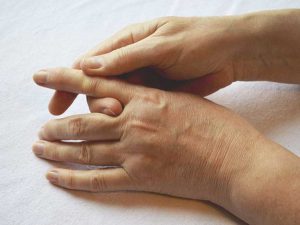Our hands are one of the most functional organs we have! From eating, texting, to carrying heavy loads – our hands help us get through the day. Hence, taking care of our hands in times of severe injuries or ailments is essential. Therefore, if you are suffering from trigger finger, it’s necessary to get in touch with an ace hand surgeon and cure the disease.
Trigger finger might result in your thumb or finger becoming stuck in an awkward position. It leads to stiffness and pain. You might find it tough to move the finger. And when other treatments fail, surgery is the most obvious solution. The operation happens within a short span of time and the success rates are high get more at Wearing a ring
What is a trigger finger?
Also known as stenosing tenosynovitis, trigger finger is a situation where one finger gets fixed in a specific position, in one or more joints. It affects your finger mobility and leads to discomfort and pain. The condition can also impact any finger or your thumb. Trigger finger is also called trigger digit, which affects your other fingers as well. The typical symptoms include the following:
- Having excruciating pain on your thumb or at the bottom of the finger when it’s pressed or moved on
- You experience a clicking sound or stiffness during any movement
- You are unable to straighten or bend the thumb or finger
- When the conditions become worse, the thumb or finger might automatically curl and be complete stuck
Trigger Finger and various kinds of surgery
Only an ace hand surgeon can tell you if your trigger finger situation needs an operation or not. However, being able to find an ace surgeon is tough. For reference, you can always read through Dr Looi Kok Poh Orthopaedics review and the like to ensure you are reaching out for expert help.
However, there are three kinds of surgery for this:
- An open surgery- Here the hand surgeon makes a little incision in your palm. After that, the tendon sheath gets cut so that it gets extra space to move. A hand surgeon would stitch the wounds close. Usually, the patient is under local anesthesia during surgery. Most doctors prefer an open-surgery as it involves minimal risk.
- Tenosynovectomy – Your hand surgeon or an expert orthopedic will only suggest this surgery type when other modes of treatment fail. The surgery is done to remove a section of the tendon sheath. It will enable the finger to move freely like before once again.
- Percutaneous release surgery – Hand surgeons use local anesthesia for percutaneous release surgery. A needle gets inserted beneath the digit so that the tendon sheath can is cut. There’s no wound generating from this surgery. However, there’s little scope for damaged blood vessels or damaged nerves near the tendon sheath after the surgery. But this damage can be repaired with medical care after the surgery.
If left unattended or untreated, trigger finger can lead to excess pain and discomfort. It might reach a stage where the finger is beyond recovery. It makes everyday tasks tough and prone to discomfort. When attended at the right time, you can heal trigger finger through non-surgical methods as well. However, for this, you need to get in touch with an expert hand surgeon or orthopaedic to discuss the course of treatment.








